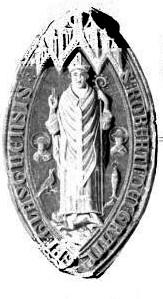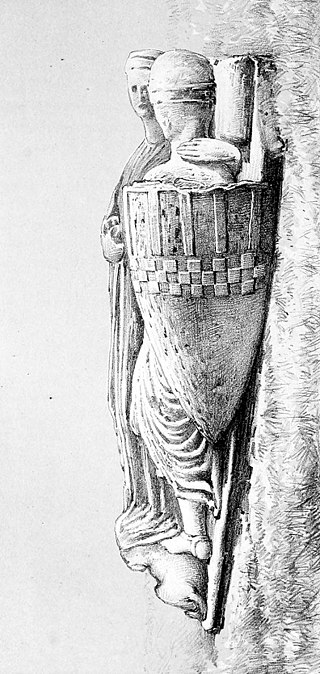Related Research Articles

Alexander III was King of Alba (Scotland) from 1249 until his death. He concluded the Treaty of Perth, by which Scotland acquired sovereignty over the Western Isles and the Isle of Man. His heir, Margaret, Maid of Norway, died before she could be crowned.
Margaret, known as the Maid of Norway, was the queen-designate of Scotland from 1286 until her death. As she was never inaugurated, her status as monarch is uncertain and has been debated by historians.

The Wars of Scottish Independence were a series of military campaigns fought between the Kingdom of Scotland and the Kingdom of England in the late 13th and 14th centuries.

Eric Magnusson was the King of Norway from 1280 until 1299.
When the crown of Scotland became vacant in September 1290 on the death of the seven-year-old Queen Margaret, 13 claimants to the throne came forward. Those with the most credible claims were John Balliol; Robert de Brus, 5th Lord of Annandale; John Hastings, 1st Baron Hastings; and Floris V, Count of Holland.
Robert de Brus, 6th Lord of Annandale, jure uxoris Earl of Carrick (1252–1292), Lord of Hartness, Writtle and Hatfield Broad Oak, was a cross-border lord, and participant of the Second Barons' War, Ninth Crusade, Welsh Wars, and First War of Scottish Independence, as well as father to the future king of Scotland Robert the Bruce.

The Guardians of Scotland were regents who governed the Kingdom of Scotland from 1286 until 1292 and from 1296 until 1306. During the many years of minority in Scotland's subsequent history, there were many guardians of Scotland and the post was a significant constitutional feature in the course of development for politics in the country.

Robert Wishart was Bishop of Glasgow during the Wars of Scottish Independence and a leading supporter of Sir William Wallace and King Robert Bruce. For Wishart and many of his fellow churchmen, the freedom of Scotland and the freedom of the Scottish church were one and the same thing. His support for the national cause was to be of crucial importance at some critical times.
Jón Magnússon was Earl of Orkney in 1284–c. 1312.
Isabel Bruce was Queen of Norway as the wife of King Eric II.
Margaret of Scotland was Queen of Norway as the wife of King Eric II. She is sometimes known as the Maid of Scotland to distinguish her from her daughter, Margaret, Maid of Norway, who succeeded to the throne of Scotland.

Sir William Douglas "le Hardi", Lord of Douglas was a Scottish nobleman and soldier.

Walter Bailloch, also known as Walter Bailloch Stewart, was distinguished by the sobriquet Bailloch or Balloch, a Gaelic nickname roughly translated as "the freckled". He was the Earl of Menteith jure uxoris.

Alexander de Baliol, Baron Balliol, Lord of Cavers was an Anglo-Scottish noble. He served at one time as Chamberlain of Scotland.

William de Vesci or Vescy was a prominent 13th-century noble. He was a son of William de Vesci and his second wife Lady Agnes de Ferrers, daughter of William de Ferrers, 5th Earl of Derby, and his first wife Sibyl Marshal.

Sir Patrick de Graham, Lord of Kincardine was a 13th-century Scottish noble and soldier.
Sir Geoffrey de Mowbray, Justiciar of Lothian, Baron of Dalmeny, Lord of Barnbougle and Inverkeithing was a 13th-14th century Scottish noble.
Events from the 1290s in Scotland.
Events from the 1280s in the Kingdom of Scotland.
References
- ↑ "Margaret: Manuscript - 1290, 14 March, Birgham - Parliamentary Records - Letters: confirmation of the treaty of Salisbury" (in Old French and English). Records of the Parliaments of Scotland to 1707, University of St Andrews . Retrieved 3 October 2009.
- 1 2 "The Scottish Wars of Independence", Foghlam Alba
- "Birgham, Treaty of (1290)" in Collins Dictionary of Scottish History edited by Ian Donnachie and George Hewitt (HarperCollins, 2001, ISBN 0-00-714710-4)
- "Medieval Scotland, 1100 - 1560", by David Ditchburn and Alastair J. MacDonald in New Penguin History of Scotland (Penguin Books, 2001, ISBN 0-14-026367-5), esp. pp. 165 et. seq.